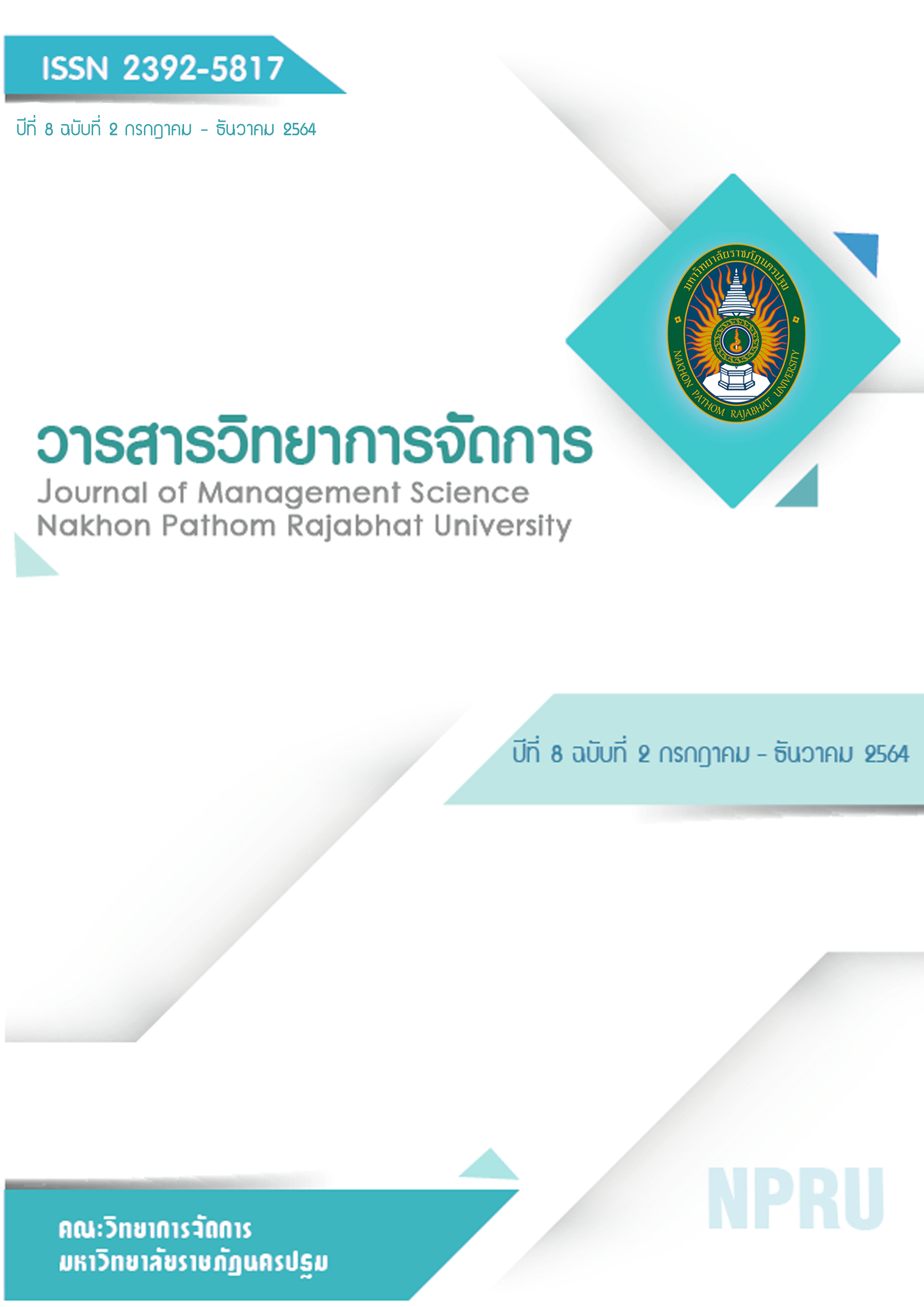Increasing Community Income through Collaboration between the Government and Private Sector in Social Enterprise: Case Study of Organic Vegetable Cultivation in Tambon Ban Ton, Phrayeun District, Khon Kaen Province
Main Article Content
Abstract
This research had the following objectives:(1) To study collaboration between the government and private sector in social enterprise by conducting a case study of organic vegetable cultivation in Tambon Ban Ton, Phrayeun District, Khon Kaen Province; and (2) To study the effect of public-private collaboration on raising the income of the community from organic vegetable cultivation in Tambon Ban Ton, Phrayeun District, Khon Kaen.
This research was a qualitative study. Data were collected by in-depth interviews with seven key informants, including one from the government sector, one from the private sector, and five members of the Community Enterprise Group of Tambon Ban Ton, Phrayeun District, Khon Kaen Province. This study had the following findings:
1) There was public-private collaboration during implementation of the organic vegetable cultivation in four dimensions: (1) Marketing, including planning and preparation, identifying markets, and processing raw product; (2) Production, including training to increase knowledge on vegetable cultivation and harvesting crop; (3) Management, including implementation in accordance with a structure, roles and responsibilities of enterprise group members; and (4) Finance and accounting, including funding for start-up costs, creation of a revolving loan fund, and training in balancing income and expenditures.
2) The public-private collaboration in support of the community enterprise helped strengthen the host community in the following ways: (1) Management: The enterprise was able to double the yield from the organic vegetable cultivation; (2) Marketing: Sales of product doubled; (3) Increased knowledge: Participants learned how to minimize capital costs in the purchase of fertilizer; (4) Public relations: Participants learned how to add value to the product through branding; and (5)Capital fund management:Participants were able to expand the area for organic vegetable cultivation.
Article history : Received 27 February 2021
Revised 1 April 2021
Accepted 5 April 2021
SIMILARITY INDEX = 0.00 %
Article Details
The views and opinions of the article appearing in this journal are those of the author. It is not considered a view and responsibility of the editorial staff.
References
ฐายิกา จันทร์เทพ. (2559). การศึกษาผลการดำเนินงานของคณะทำงานการพัฒนาเศรษฐกิจฐานราก และประชารัฐ. การค้นคว้าอิสระหลักสูตร รัฐศาสตรมหาบัณฑิต lบริหารรัฐกิจและกิจการสาธารณะ) สาขาวิชาบริหารรัฐกิจและกิจการสาธารณะ สำหรับนักบริหารคณะรัฐศาสตร์ มหาวิทยาลัยธรรมศาสตร์.
วรรณภา ฐิติธนานนท์. (2556). รูปแบบการดำเนินงานวิสาหกิจชุมชน หมู่บ้านเครื่องปั้นดินเผา มอญโบราณ เพื่อการพึ่งพาตนเองอย่างยั่งยืน. วารสารวิจัยราชภัฏพระนคร สาขามนุษยศาสตร์และสังคมศาสตร์. ,8(1),67.
วันชัย ศิริชนะ.(2559). เจาะแนวคิดของ โมเดลธุรกิจ ‘Social Enterprise’ ทำอย่างไร ถึงจะประสบผลสำเร็จแบบยั่งยืน. [ออนไลน์]. ค้นเมื่อ 30 สิงหาคม 2563, จาก https://www.marketingoops.com/news/biz-news/singha-park-social-enterprise/
วิภาภรณ์ ชัยรัตน์. (2560). รูปแบบของวิสาหกิจเพื่อสังคมของรัฐบาลกับการพัฒนาเศรษฐกิจของประเทศอย่างยั่งยืน. [ออนไลน์]. ค้นเมื่อ 27 ตุลาคม 2563,
จาก http://www.dsdw2016.dsdw.go.th/doc_pr/ndc_2559-2560/wpa_8229.html
สมชัย ศรีนอก และ ชวาล ศิริวัฒน์. (2561). คนจน 4.0 : นวัตกรรมสร้างความจนและแก้ปัญหาความจน. วารสารมหาจุฬาวิชาการ.,5 (ฉบับพิเศษ),83.
สำนักงานคณะกรรมการนโยบายรัฐวิสาหกิจ.(2555). การร่วมลงทุนระหว่างรัฐและเอกชน. [ออนไลน์]. ค้นเมื่อ 29 ตุลาคม 2563, จาก http://www.ppp.sepo.go.th/contents/4
สำนักงานคณะกรรมการพัฒนาการเศรษฐกิจและสังคมแห่งชาติ .(2559). ยุทธศาสตร์การพัฒนาประเทศตามแผนพัฒนาเศรษฐกิจและสังคมแห่งชาติ ฉบับที่ 12. [ออนไลน์]. ค้นเมื่อ 25 ตุลาคม 2563, จาก https://www.nesdc.go.th/ewt_dl_link.php?nid=6422

